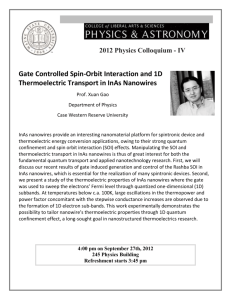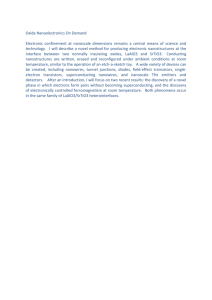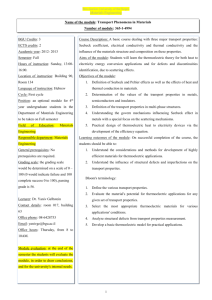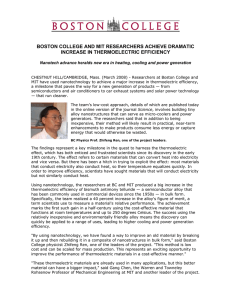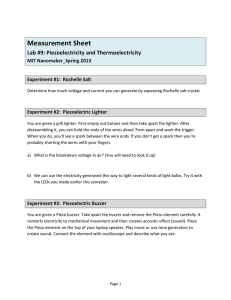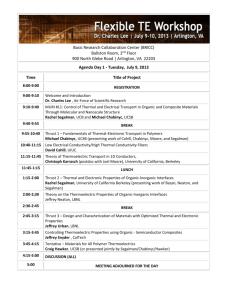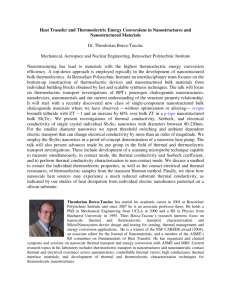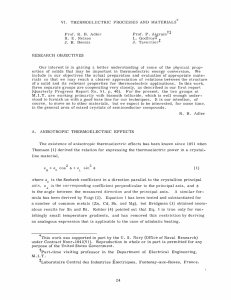Summary - Moldovan Research and Development Association
advertisement
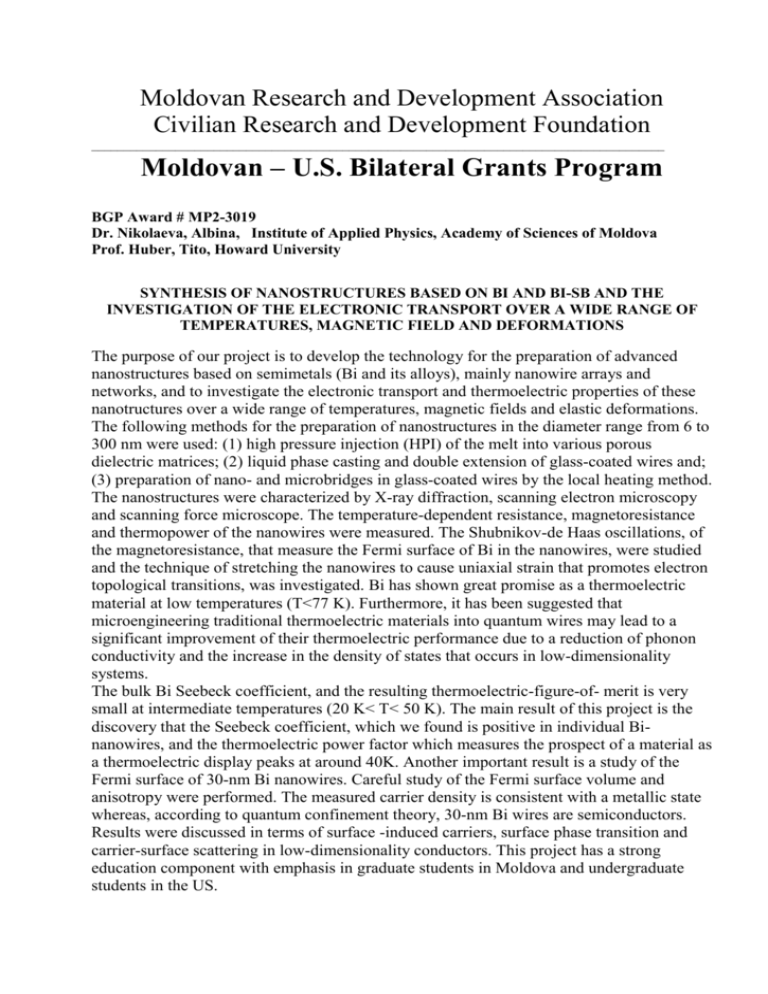
Moldovan Research and Development Association Civilian Research and Development Foundation _________________________________________________________________________________________ Moldovan – U.S. Bilateral Grants Program BGP Award # MP2-3019 Dr. Nikolaeva, Albina, Institute of Applied Physics, Academy of Sciences of Moldova Prof. Huber, Tito, Howard University SYNTHESIS OF NANOSTRUCTURES BASED ON BI AND BI-SB AND THE INVESTIGATION OF THE ELECTRONIC TRANSPORT OVER A WIDE RANGE OF TEMPERATURES, MAGNETIC FIELD AND DEFORMATIONS The purpose of our project is to develop the technology for the preparation of advanced nanostructures based on semimetals (Bi and its alloys), mainly nanowire arrays and networks, and to investigate the electronic transport and thermoelectric properties of these nanotructures over a wide range of temperatures, magnetic fields and elastic deformations. The following methods for the preparation of nanostructures in the diameter range from 6 to 300 nm were used: (1) high pressure injection (HPI) of the melt into various porous dielectric matrices; (2) liquid phase casting and double extension of glass-coated wires and; (3) preparation of nano- and microbridges in glass-coated wires by the local heating method. The nanostructures were characterized by X-ray diffraction, scanning electron microscopy and scanning force microscope. The temperature-dependent resistance, magnetoresistance and thermopower of the nanowires were measured. The Shubnikov-de Haas oscillations, of the magnetoresistance, that measure the Fermi surface of Bi in the nanowires, were studied and the technique of stretching the nanowires to cause uniaxial strain that promotes electron topological transitions, was investigated. Bi has shown great promise as a thermoelectric material at low temperatures (T<77 K). Furthermore, it has been suggested that microengineering traditional thermoelectric materials into quantum wires may lead to a significant improvement of their thermoelectric performance due to a reduction of phonon conductivity and the increase in the density of states that occurs in low-dimensionality systems. The bulk Bi Seebeck coefficient, and the resulting thermoelectric-figure-of- merit is very small at intermediate temperatures (20 K< T< 50 K). The main result of this project is the discovery that the Seebeck coefficient, which we found is positive in individual Binanowires, and the thermoelectric power factor which measures the prospect of a material as a thermoelectric display peaks at around 40K. Another important result is a study of the Fermi surface of 30-nm Bi nanowires. Careful study of the Fermi surface volume and anisotropy were performed. The measured carrier density is consistent with a metallic state whereas, according to quantum confinement theory, 30-nm Bi wires are semiconductors. Results were discussed in terms of surface -induced carriers, surface phase transition and carrier-surface scattering in low-dimensionality conductors. This project has a strong education component with emphasis in graduate students in Moldova and undergraduate students in the US.


